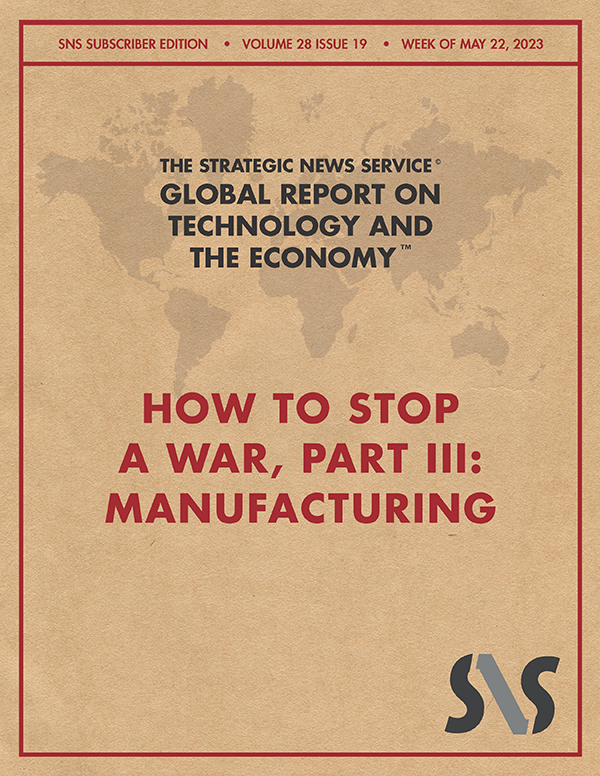
HOW TO STOP A WAR, PART III: MANUFACTURING By Evan Anderson
FiRe is back! Future in Review returns, live, at the beautiful Terranea Resort in Palos Verdes, CA, November 6-9. Join old friends and new at this life-changing event. Register now! Earlybird tickets are just $3900 until May 31 - that's a savings of $2000. See more in "Upcoming Events." _____
Why Read: This week's issue is the third in a series covering the threat of aggression in Asia by the People's Republic of China, global economic consequences, and how to achieve credible deterrence.
Author's Note: This series seeks to identify the case for action across the world for a greater demonstration of deterrence to the People's Republic of China (PRC). This work is not intended to be a comprehensive assessment of the state of readiness of the armed forces of the countries discussed, for which there are far more qualified authors. Nor does it seek to "get ahead" of US or allied efforts here or intend to release confidential or classified information about these topics. The point, rather, is to outline ways in which greater deterrence can be both secured and highlighted in order to prevent the PRC from acting under the impression that a kinetic war in Asia is in its interest, with resulting disastrous consequences for the global population, economy, and human progress. [See "How to Stop a War, Part I: The Worth of Credible Deterrence" (4/6/23) and "How to Stop a War, Part II: Becoming More Resourceful" (4/27/23)] _____ "To be prepared for war is one of the most effectual means of preserving peace." - george washington "A pint of sweat will save a gallon of blood." - gen. george s. patton In the last issue of this series, we covered the credibility of US/allied deterrence of a Chinese invasion of Taiwan from the perspective of the raw resources required to maintain a military in the face of conflict. A secure supply chain of oil, ore, rare-earth elements (REEs), and the capital to use them is the first step in proving the ability to fight. But there is far more to the task than raw resources alone. After all, those resources have a purpose: to make goods. This week, we'll focus on the second-order manufactured goods necessary to use those resources to maintain an effective force posture, as well as to make the finished goods required to wage war. It cannot be overstated that in any situation wherein the leadership of the PRC is likely gauging the world's ability to respond to potential aggression, these factors must be considered in the context of Unrestricted Warfare. Thus, the common thread throughout this series is not just the traditional means of production (e.g., manufacturing food, bullets, and tanks), but also the combination of those factors with a country's ability to maintain command and control over the entire modern battlefield. That battlefield now includes the broader economy, the information environment, and civil society. Any conflict, or deterrence thereof, must take this into account. As with raw resources, however, a group of allies cannot control these modern battlefields without first having the security of supply needed to maintain them. Let's take a look at where the US and its allies stand on the secondary goods vital for credible deterrence.
|

